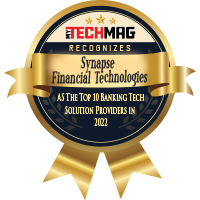Modern technologies are helping improve and automate the delivery of banking services. While technology has been disrupting the banking industry for a long time, the pandemic has accelerated its adoption. This change will persist beyond the pandemic. That said, we give you the most significant banking tech trends that will deconstruct the walls of the traditional banking system in 2022 and beyond.
Decision intelligence to empower decisions
AI is already helping banks strengthen customer relationships and lower costs. This year and in the foreseeable future, this sector will explore the decision-making capabilities of this technology to evaluate, manage, and improve decisions. The banking and finance sector is replete with unpredictable market conditions. With AI-powered information and insights at their disposal, banks can efficiently leverage transaction and external data and then analyze this information to support, augment, and automate decisions. Some of the advantages are:
- AI can analyze and detect unseen patterns and anomalies that can affect decisions.
- It can accelerate the decision-making process.
- AI algorithms are highly flexible, so they help businesses see a plethora of possibilities.
Banks that don’t leverage data-driven decisions will soon lose their advantage in an increasingly data-centric world. To compete in the global landscape, they need a well-rounded AI-and-analytics tech stack.
Some use cases in the industry:
- Processing credit applications for car loans.
- Helping customers in making wiser investments.
- For forecasting customers’ needs.
- For making more intelligent judgments.
Democratization of advanced technologies
As pandemic-driven remote working became widespread, several sectors were forced to go digital urgently. The banking sector also widely embraced digitization, shedding its traditional stubbornness. The newfound trust in technology is driving greater confidence amongst banking organizations to reconsider their offerings and rethink their strategies.
Technology democratization has enabled banks to add a layer to innovation and enhance agility and resilience. New technologies, such as AI, are being delivered by fintechs via the cloud, significantly lowering the barriers to entry and allowing small banks to compete with global banks.
This democratization of technology access will continue to stir up the banking services industry in 2022 and beyond.
Banks will seek solutions to unlock the potential of their data
Unlocking value from data will be the critical differentiator between winning and lagging institutions. Covid-19 has made banking institutions even more optimistic about investing in data to improve profitability using decision intelligence. To achieve gains using data intelligence, it is vital to put fundamental data foundations in place.
Collating, standardizing, and enriching data sets is essential to ensure the success of analytics programs.
With this solid foundation, banks can run successful data analytics to ensure:
- Deeper customer relationships in the long run.
- Hyper-personalized banking experiences to customers.
- Stronger relationships with customers based on trust.
Hyper-personalized services and information for longer customer retention
Banks have been heavily investing in digital technologies in the past two years. These digital investments have paid off well in the form of growing volumes of interaction over digital channels. Through technology, banks have been able to create personalized customer experiences for different parts of the banking value chain.
Personalization is paramount to this industry that hinges on the ability of teams to provide targeted information and personalized services based on individual needs, interests, and past behaviors. In the context of banking, personalization means using data and analytics to anticipate customer needs. When data analysis is done in real-time, it is known as hyper-personalization.
The insights obtained can be used to make a compelling case to the client in terms of – cost, terms, mortgages, penalties, and bonuses.
The benefits are many, including:
- Cost-reduction.
- Bespoke products and services.
- Simplification of products
- Obtaining a 360-degree view of customers.
Cyber security mesh – enabling better security
Due to remote working movement and the rise in customer-facing interactions on digital channels, identity and access management (IAM) are becoming more complex and challenging. In 2022, more banking institutions will integrate security tools into a cooperative ecosystem using cybersecurity mesh architecture.
A cyber security mesh integrates disparate and widely distributed security services, enabling different security solutions to work together to improve overall security. Below are some features of cybersecurity mesh:
- It utilizes zero trust.
- Threats can be detected in real-time.
- All data, equipment, and systems are treated equally and securely.
- It adapts to emerging threats and changing access needs.
- It can quickly verify identity, policy adherence, and context across cloud and non-cloud environments.
3 Most Critical Technology predictions for by experts
Technology is constantly evolving, enabling banks to build resilience and pivot to customer needs. As we delve deeper into 2022, it is crucial to consider the new emerging trends in the fintech space.
- We’ll see more future-oriented, sustainable finance products.
- This year, we’ll witness a more collaborative approach and connectivity between banks.
- More banks will be adapting the ‘buy now pay later (BNPL) model to grow their customer base.
Autonomic systems
It is a computing environment that can manage itself, learn about the pre-existing loopholes, identify the gaps, and dynamically modify its algorithms in real-time to adapt to changes dynamically. These systems create an agile set of technology capabilities to support the following functions:
- To optimize performance.
- To support new requirements and situations.
- To build a hedge against attacks without human intervention.
As it is utilized more in the banking industry in the coming years, the industry will reap the following benefits:
- Seamless workflow amongst the different departments of banking sectors
- More secure transactions
- No more incidents of fraud and phishing attacks
Final words:
The era of the digital revolution has arrived. Emerging technologies are reshaping the banking sector as we know it and introducing us to a tech-enabled paradigm shift. Therefore, sticking to old ways is not a choice; it’s time to embrace modern technologies and be a part of the revolution.








